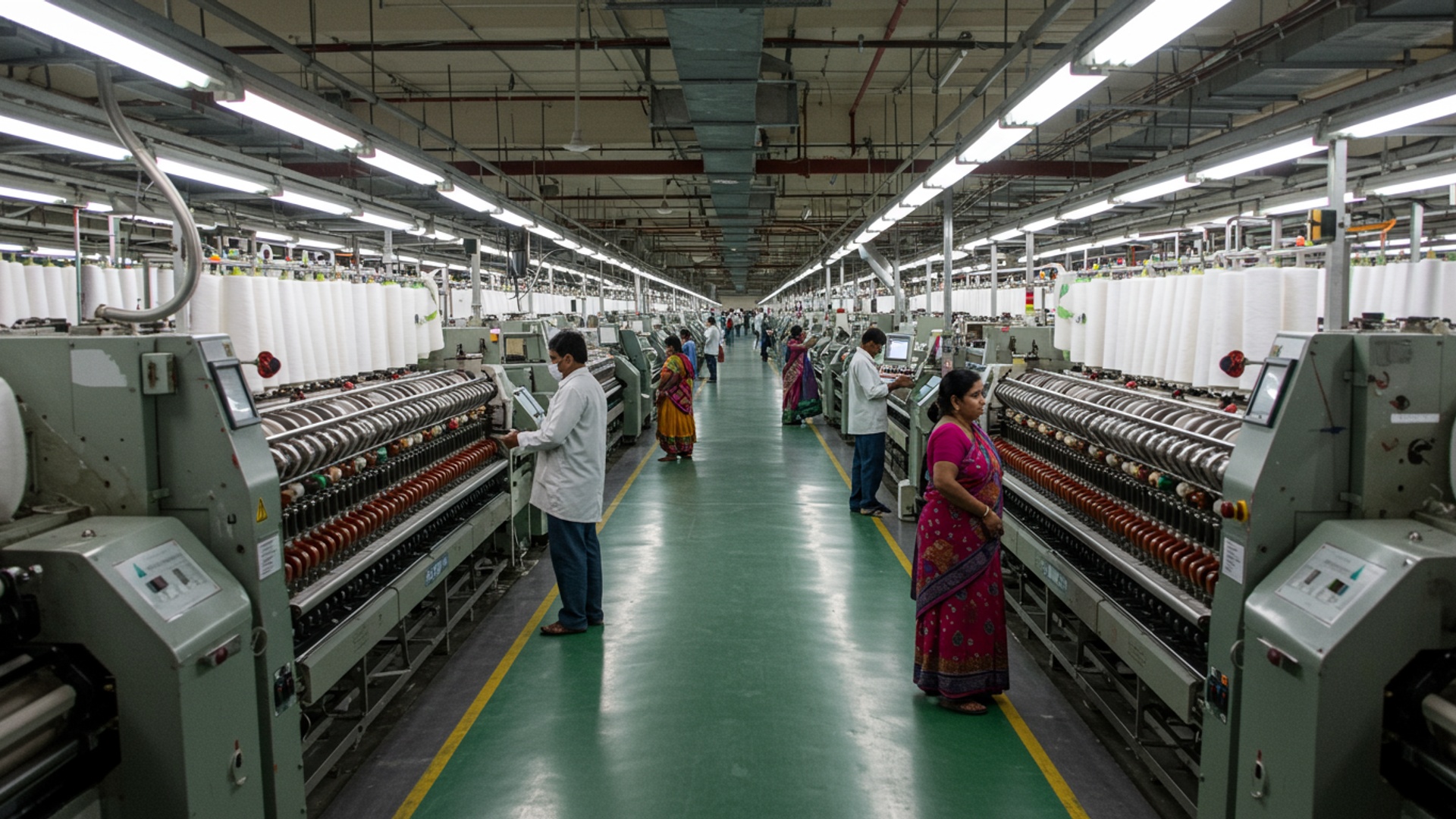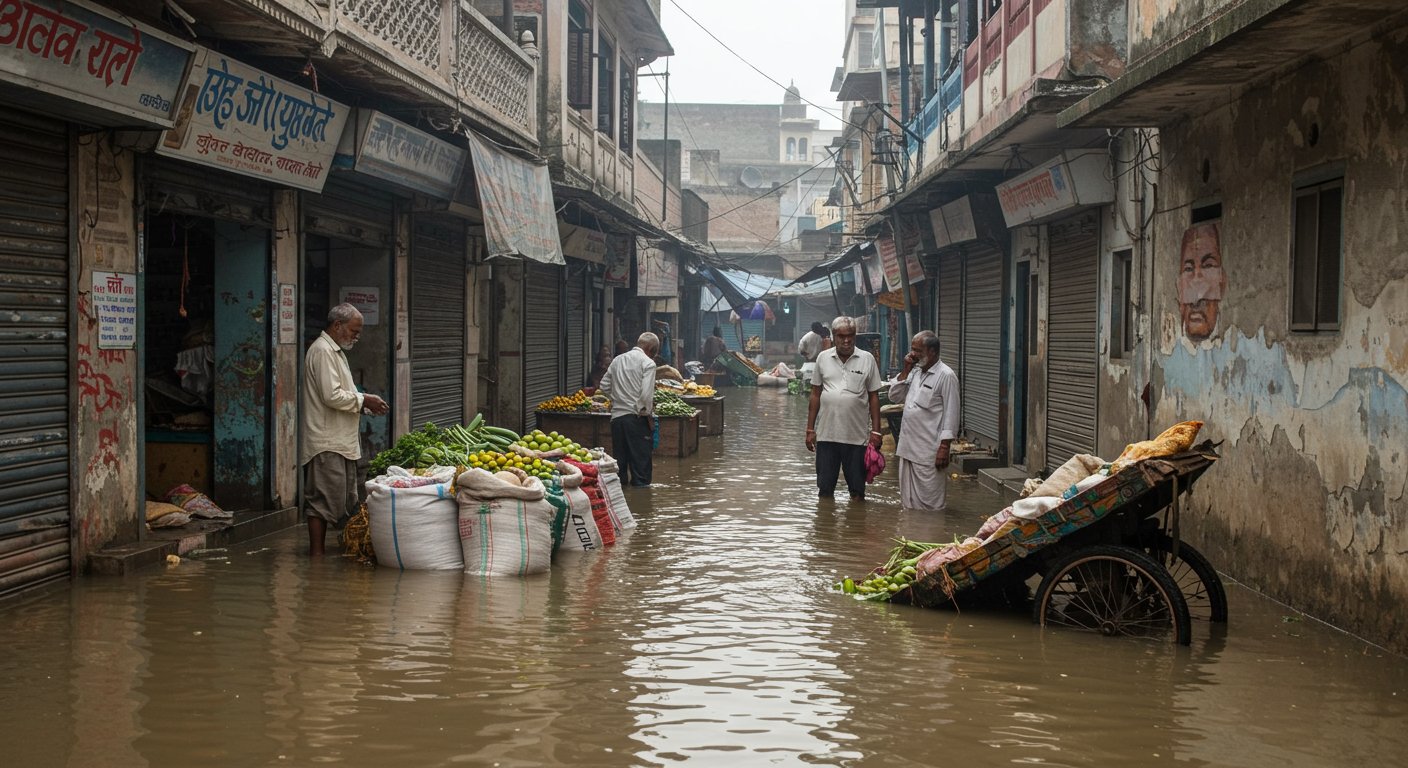Gujarat’s government just announced much better help for its clothing and fabric businesses, aiming to make them stronger and attract new factories. This week, the state revealed a new plan with more money and easy rules for companies that make textiles here. The fresh policy aims to create more jobs and bring more making work to Gujarat, making it a top place for this essential industry. This big step comes as other countries also work hard. Gujarat wants to keep its lead, promising a good future for workers and owners right now.
Making the Textile Industry Stronger
The government of Gujarat has recently put in place a new plan to help its textile industry grow and become even more vital. This new plan, called the Gujarat Textile Policy 2024, started on October 15, 2024. It is set to be in effect for five years, aiming to help textile businesses until September 30, 2029. The main goal of this plan is to bring in more money from businesses, help local companies, make sure factories work in a way that protects the environment. create many new jobs. Gujarat has a long history with textiles. It is known as the “Textile State of India” and also the “Denim Capital of India.” The state makes a lot of cotton, man-made fibers. denim. Over the years, Gujarat has had different plans to help its textile industry. For example, a plan in 2012 helped bring in a lot of money, about 35,000 crore rupees. created more than 2. 5 lakh jobs. This history shows that the state has been active in helping its textile businesses. This new plan is a step forward from earlier versions. It looks at the whole process of making textiles, from start to finish. aims to fill any gaps. It strongly supports the idea of “Make in India” and “Aatmanirbhar Bharat,” which means making things in India and being self-reliant.
Help with Money and Costs
The new plan offers many ways to help textile businesses with their money and daily costs. These benefits are meant to make it easier for companies to set up new factories, buy new machines. run their daily operations.
- Capital Help: Businesses can get money back for a part of what they spend on new machines and buildings. This “capital subsidy” can be from 10 percent to 35 percent of the money spent. The most a company can get back is 100 crore rupees. The exact amount depends on where the factory is located and what kind of textile work it does.
- Interest Help: If a company takes a loan to start a new project or make its factory bigger, the government will help pay a part of the interest on that loan. This “interest subsidy” ranges from 5 percent to 7 percent for loans over five to eight years.
- Electricity Cost Help: To lower the money spent on electricity, which is a big cost for textile factories like those that dye fabrics or spin yarn, the plan offers to pay 1 rupee for each unit of electricity used. This help is available for five years.
These money benefits are designed to make it more appealing for businesses, especially smaller and medium-sized ones, to use new and better machines and ways of working.
Support for Workers and Jobs
A very vital part of this new plan is its focus on creating jobs and helping workers. The government wants to ensure that more people find work in the textile industry, especially local people.
- Worker Pay Help: Textile businesses that hire local workers can get direct money help for paying wages. For female workers, this help can be from 3,000 to 5,000 rupees each month. For male workers, it can be from 2,000 to 3,000 rupees each month. This help is especially for units that employ many workers, like those with 4,000 or more people, including at least 1,000 female employees.
- Help for Self-Help Groups: The plan also gives money and training help to “Self-Help Groups,” which are groups of people, often women, who work together on small-scale textile production. A group of at least 20 women can be recognized as a Self-Help Group. Each member can get up to 5,000 rupees per month as payroll assistance for five years. training help of 5,000 rupees per month for three months. This encourages self-employment and helps people at the local level.
This focus on workers is expected to create many jobs in cities and villages.
What Kinds of Businesses Get Help
The new plan covers many different types of work within the textile industry. This ensures that help reaches various parts of the textile making process. The kinds of activities that can get help under this plan include:
- Making garments, clothes. finished textile items.
- Making technical textiles, which are special fabrics used in industries like cars, healthcare. building.
- Weaving fabrics (with or without early steps of making yarn ready).
- Knitting fabrics.
- Dyeing and processing fabrics.
- Changing the texture of yarn (texturizing) or twisting it.
- Making yarn from man-made fibers like Polyester Staple Fiber (PSF) or Viscose Staple Fiber (VSF). making yarn from cotton or synthetic filament yarn is not included.
The guidelines also cover “composite units,” which are factories that handle the entire process from making yarn to producing finished fabric. This is expected to give a big boost to the state’s textile industry.
Goals for a Stronger Future
The government’s plan also aims to make the textile industry more modern and friendly to the environment. The policy offers support for:
- Getting quality certificates for products.
- Reducing the use of energy and water in factories.
- Getting new technology.
Factories that use green technologies, like solar power, systems that clean water so no dirty water goes out. machines that use less water for dyeing, can get extra money help and tax benefits. To make it easier for businesses to set up in special textile zones called “textile parks,” the policy removes the need to pay stamp duty for buying land in these areas. These parks offer everything a factory needs, including easy ways to get government approvals, technology centers. help with moving goods. A big new textile park will also be built in Vansi, in the Navsari district, with a large investment of 3. 52 billion rupees. This park is expected to greatly improve Gujarat’s textile setup and create many jobs.
What People are Saying
Leaders from the textile industry have welcomed this new plan. They have called it “bold and comprehensive.” They believe it will help Gujarat’s textile industry have a better chance against other places, bring in new investments. help smaller businesses grow. They are especially happy about the plan’s focus on protecting the environment, creating jobs. helping small businesses in villages. The Southern Gujarat Chamber of Commerce and Industry (SGCCI) had asked the government to include textile factories located in industrial zones within cities. the government has agreed to this. The Industries Minister, Balvantsinh Rajput, announced these details. Nikhil Madrasi, the president of SGCCI, said that the goal is to boost investment, help women grow their businesses. create more jobs in both cities and rural areas. Ashok Jirawala, vice president of SGCCI, added that this move will greatly help the state’s textile industry. The Chief Minister, Bhupendra Patel, stated that the policy is a “progressive step” that will make the industry stronger and help Gujarat stay a world leader in textiles. He also said it will create job opportunities for women and young people and build a strong and competitive textile industry. This new plan is expected to bring in a lot of money from businesses, both from within India and from other countries. It aims to build a strong system for both big and small businesses, creating jobs across the whole textile process, from making yarn to making finished clothes. It is hoped that this will further strengthen Gujarat’s position as a main textile hub in the country. ![]()









